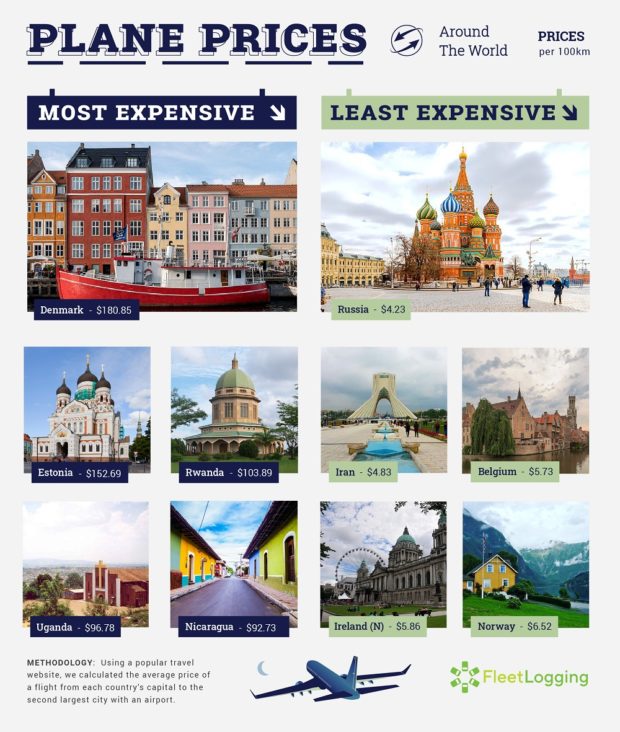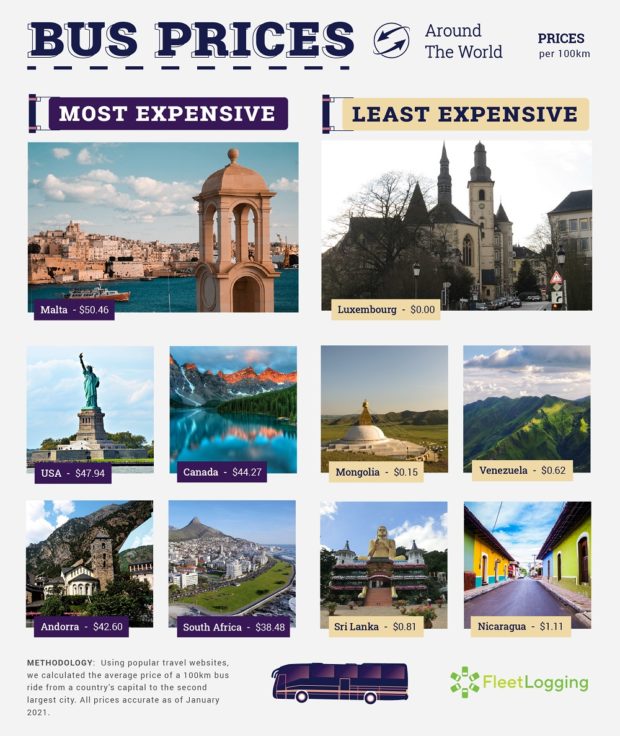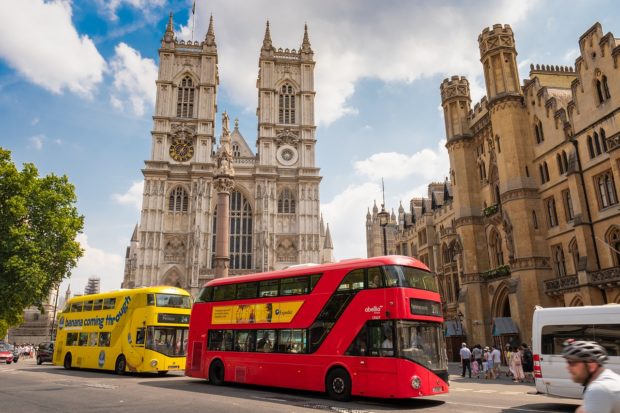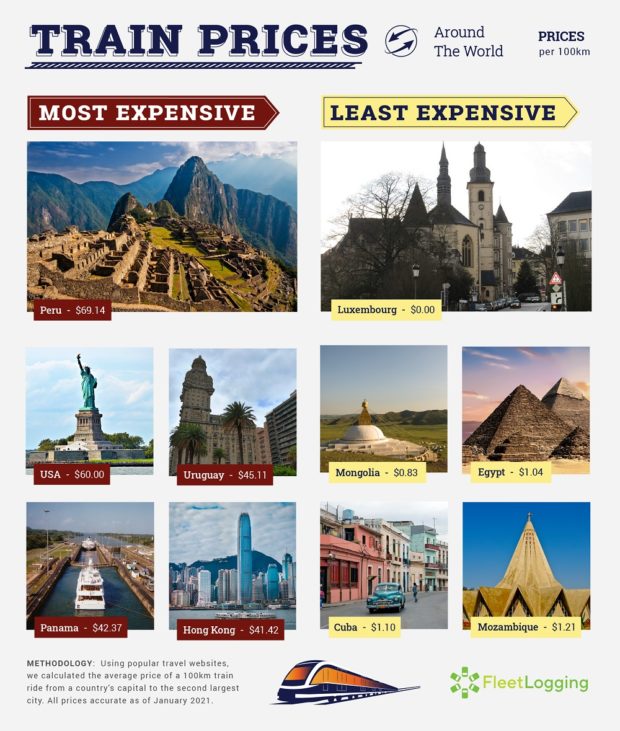Whether you’re going by train, plane, or automobile, getting your travel budget right is an essential part of every business trip or globe-trotting adventure. Good travel budgeting will help you arrive on time, safely, and with plenty of extra spending money in your pockets.
But with currency exchanges and language barriers to navigate, how do you make sure you’re not overspending? FleetLogging.com has the answer. They have indexed travel costs per 100km in countries across the globe, separated by plane, train, and bus ticket prices. The handy guide is the perfect way to help travellers make their money go as far as possible.
There’s good news for anyone heading to Thailand. The Southeast Kingdom has the cheapest travel costs globally, averaging at $4.34 by bus, train, and plane.

Russia comes second at $4.85 per 100km travelled, although it beat Thailand at air travel price. You can fly across Russia’s 17,000 square kilometres for under $5 per 100km. Turkey, Kenya, and Malaysia are some of the other countries where travel costs won’t burn a hole in your pocket. Just $5 a day is enough to cover daily train and bus fares.
Luxembourg came in mid-table (30) due to high airfares for domestic flights. However, locals and tourists don’t need to worry about having spare change for the bus. A 2020 initiative made all trips on public transport completely free.
But the same can’t be said for public transport networks in Denmark, the USA, or England. Denmark is officially the most expensive country for travel. It costs $67.33 per 100km.
And regular flyers might want to swap the plane for the train when travelling in Denmark. Domestic flights over Denmark cost more than anywhere else, adding to the country’s notoriously high cost of living.
At the other end of the scale, booking a last-minute flight for a business meeting or social event while you’re in Belgium or Norway won’t break the bank. The cost of domestic flights in both countries works out at less than $7 per 100km.
The USA has the highest train ($47.94) and bus ($60) fares, although the figures might be skewed due to the sheer size of the North American continent. A coast to coast train journey from New York to San Francisco takes three days.
Location can also impact how much you pay compared to the average. Commuters in England’s major hubs like London and Manchester have to pay more than people living in smaller cities and towns.
A train journey through South America is one way to soak up some breathtaking sights. But you will pay a premium in some countries. Peru, Uruguay, and Panama have relatively high train fares. On the other hand, you can take an unforgettable train journey across Chile for pocket change.
How we travel is usually more of a necessity than choice. But now you can plan your budget in advance, leaving you with more money to spend on food, days trips, and other memorable travel experiences.















